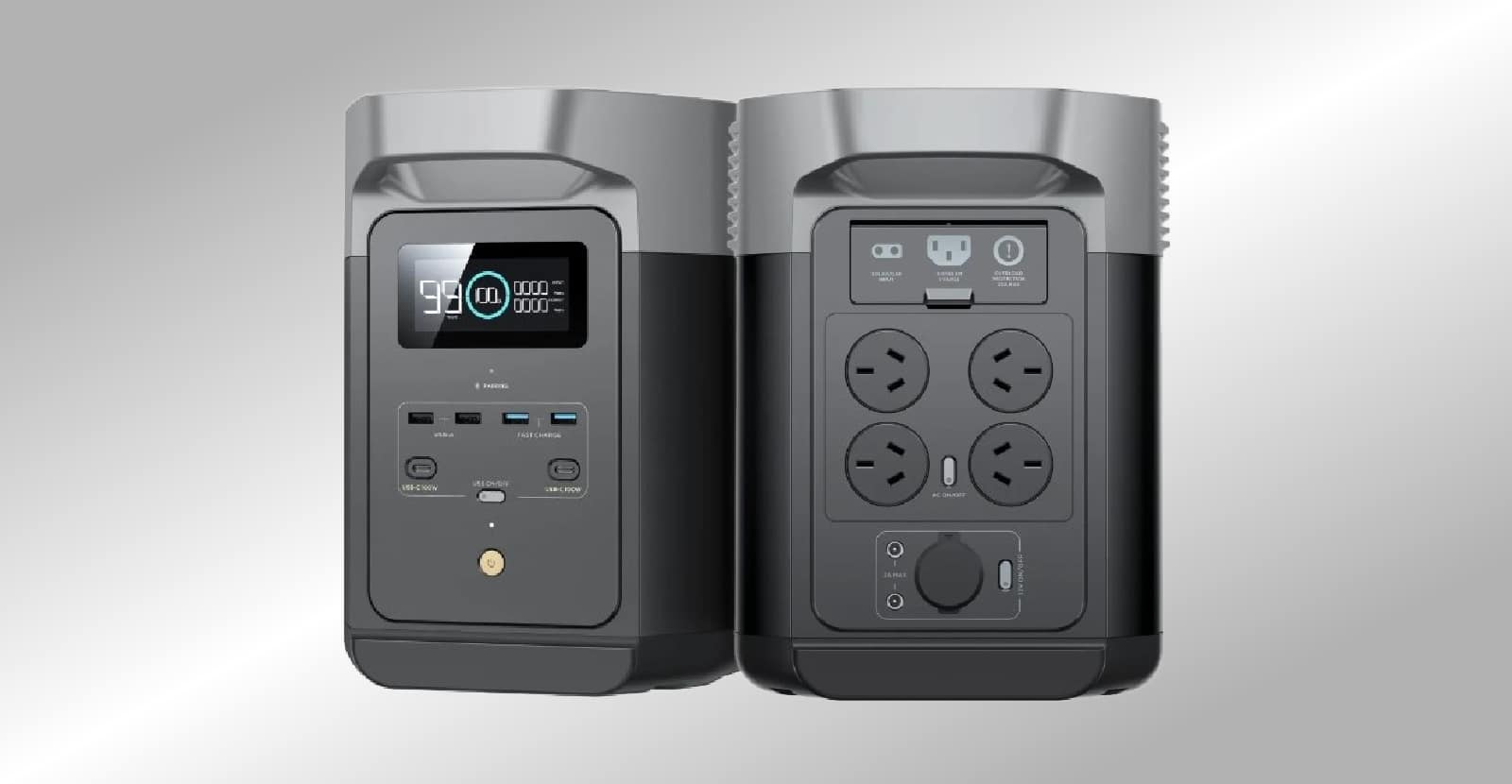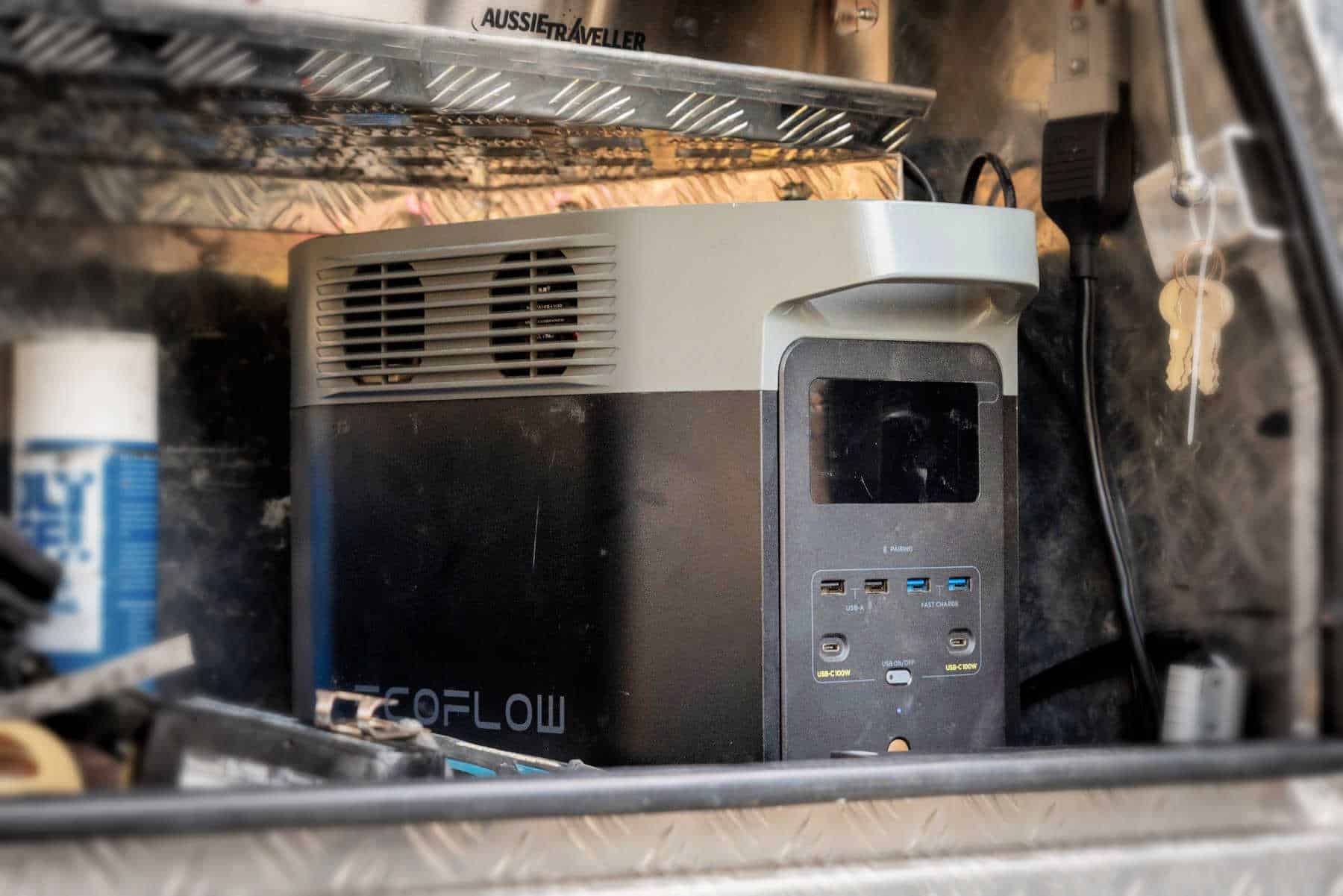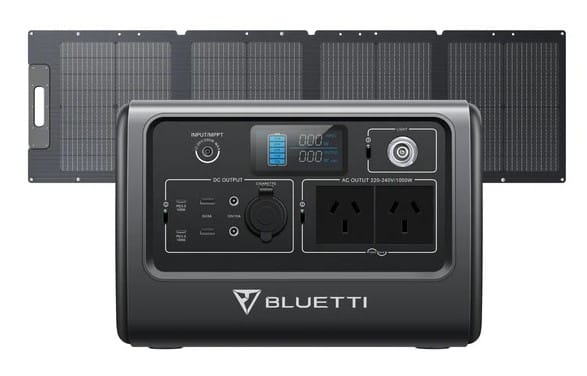Portable Solar Generators: A practical guide for off-grid and 4WD camping
Learn how portable solar generators work, how they compare to fuel-powered options, who they're for and where to get them.
Advertisement
There’s nothing quite like pulling up at a bush campsite, cracking open a cold one, and watching the sun go down…until your fridge cuts out, your phone’s dead, and the kids are asking if you’ve packed a power bank. That’s where a portable solar generator comes into play.
In this guide, we’ll explain what they are, how they differ from petrol and diesel gennies, what you can run off one, how to charge them, and what brands you’ll find here in Australia. Whether you’re rocking a rooftop tent, towing a camper trailer, or just want a backup plan for your existing 12V setup, this is for you.
Despite the name, a portable solar generator isn’t a magic box that just generates sunshine. It’s essentially a beefed-up battery pack with a built-in inverter, a solar input, and a few clever bits of circuitry that let you plug in everything from phones to fridges through to tools and 12V ovens.
Most are self-contained units. They’ve got handles, USB ports, 12V sockets, AC outlets, and a screen that tells you how much juice you’ve got left. The unit itself stores the energy but it doesn’t generate it on its own. That’s where the ‘solar’ part comes in and it’s just one way you can charge it (more on that in a minute).

Let’s break it down: why choose a solar generator over your traditional fuel-powered noise box?

Pros:
Cons:
Pros:
Cons:

You’ve got a few options here, which makes these units pretty versatile:
Some fancier units let you combine two inputs at once – for example, solar and 12V – to charge faster. Not bad if you’re short on daylight hours.
Here’s the reality. These units aren’t magic, and they do have limits. But depending on the size, they can run a lot more than you’d think.
Most solar generators also show how many hours you’ve got left based on current usage. Handy for planning those long weekends off-grid.

These things are made for people who like to camp away from the crowds, but still want to charge a drone or run a fridge overnight. Ideal for:
It’s a portable power station with a built-in battery, inverter and solar input. It’s often sold as a package with solar panels and it’s designed to store and deliver power wherever you are.
It depends on your unit. But many units can be charged via a 12V car socket or Anderson plug while you’re on the move.
It depends on your specific portable solar generator but most decent models allow pass-through charging. This means you can power your gear while the unit is recharging.
This depends on the size of your solar panel, the generator’s capacity, and how much sun you’ve got. It could take anywhere from 4 to 12+ hours.
Usually not but solar panels usually are. Most solar generators are water resistant but best practice says you should keep it undercover or inside the vehicle out of the rain.
Sometimes. You’ll need to check connector compatibility. Many brands prefer you to use their panels only.
Phones, laptops, lights, 12V fridges, fans, camera gear – and with larger models, even coffee machines, induction cooktops and power tools.
In most cases, no – unless you’ve got a very large, high-output unit and don’t mind short run times. Air cons are power-hungry beasts.
Depends on your power needs. For quiet off-grid camping and recharging devices, yes. For running welders and angle grinders in the bush? Not quite.
That depends on what you’re plugging in and size of your unit. A fridge might run for 1-3 days on a mid-size unit. Add a laptop or coffee machine and that time drops fast.
Yes. Unlike fuel-powered gennies, portable solar generators are emmision-free and silent, so they’re safe to use indoors or in enclosed spaces.
Sigh… who really takes these things camping? You can – briefly – on larger units, but it’ll drain your battery fast. Not ideal unless you’ve got lots of sunshine and time.
Here are some of the big names you’ll find in Australia, with models to suit everyone from the weekend warrior to the full-time traveller. No, we haven’t been paid to write this article so if we’ve missed your favourite brand, let us know and we’ll add them in.
Having owned an EcoFlow Delta2 Portable Solar Generator for the past 12 months, I am finding it matches and exceeds my old-school dual battery set-up. So when I got a new rig – a Jeep Gladiator – late last year, I didn’t even both installing a dual battery set up this time. Why? Because portability is king.
I can move it easily between by husband’s work vehicle, where its used to run a fridge and recharge power tool batteries, and my vehicle, which is also our weekend/camping/touring vehicle. It also doubles as a back up to run water pumps and lighting when there is a power outage at home.
I also see Portable Solar Generators being a great back up power source for those travelling with a camper trailer or hybrid camper and I personally, plan to get a second one for my off-road camper.
Providing one is not too power greedy with high-draw mod cons such as air-conditioning and microwaves, the majority of off-road and off-grid campers will find a Portable Solar Generator a great bit of gear to have in their setup.
This article contains affiliate links to products. We may receive a commission for purchases made through these links.